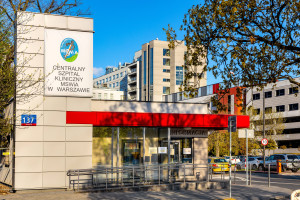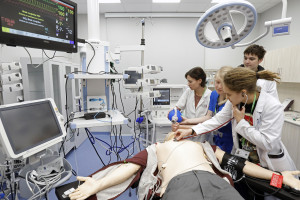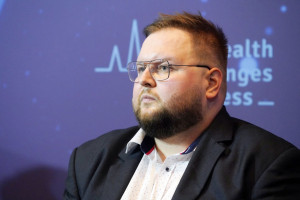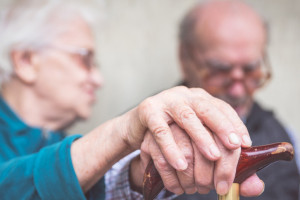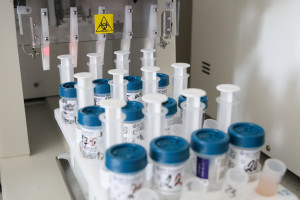40 or 80 mg only once a year. Children with SMA were sitting up on their own after 3 months.

- Salanersen (BIIB115/ION306) is a novel antisense oligonucleotide (ASO) with the potential to achieve high efficacy and a once-yearly dosing frequency for the treatment of spinal muscular atrophy (SMA).
- Interim results from a Phase I clinical trial show that children with SMA who had previously received gene therapy experienced a significant slowing of neurodegeneration and clinically significant improvement in motor function after starting salanersen.
- Based on promising data from a Phase I clinical trial, Biogen is in dialogue with regulatory authorities to advance salanersen to registrational trials, leveraging its extensive experience in SMA.
Biogen Inc. announced preliminary results from a Phase I clinical trial of salanersen, an antisense oligonucleotide (ASO) being developed for the treatment of spinal muscular atrophy (SMA).
Salanersen uses the same mechanism of action as nusinersen, but due to its more potent action , it is possible to achieve high treatment efficacy with a once-yearly dosing regimen . To inform the decision to initiate registration studies with salanersen, an interim analysis of a Phase I clinical trial was conducted in patients with SMA who had previously undergone gene therapy.
Both study doses, 40 mg and 80 mg, were administered annually. They were generally well tolerated and led to significant slowing of neurodegeneration, as evidenced by a decrease in neurofilament levels. Exploratory clinical outcome data demonstrate clinically significant functional improvement over 1 year and achievement of new World Health Organization (WHO) developmental milestones. These data were presented at the SMA Research & Clinical Care Meeting, hosted by Cure SMA and held in Anaheim, California.
"From the data obtained, I think it's easiest to interpret the information about neurofilaments and milestones developed by the World Health Organization (WHO), especially since these children had previously undergone gene therapy. It's surprising to see that a child who received gene therapy in the first year of life, and who at age five was still unable to sit unassisted, gains the ability to sit independently just three months after starting salanersen treatment, " said Valeria A. Sansone, MD, PhD, Clinical and Scientific Director of the NeMO Clinical Center in Milan, Professor of Neurology at the University of Milan, and Principal Investigator of the Phase I salanersen clinical trial.
"Given that these are preliminary data from a relatively small group of patients, I look forward to the Phase III studies, which will provide a better understanding of the effects of salanersen in both previously treated and untreated patients," she added.
Phase I clinical trial resultsA single-dose, ascending phase I clinical trial evaluated the safety, tolerability, and pharmacokinetics of salanersen. The study consisted of two parts: Part A, a randomized, placebo-controlled study in healthy adult male volunteers, and an open-label Part B in children with SMA who had previously received onasemnogene abeparvovec and whose clinical condition was considered suboptimal by the investigator. Interim results were obtained from Part B (n=24), from individuals who received either 40 mg or 80 mg of salanersen annually. In participants with elevated baseline neurofilament light chain (NfL) levels, indicative of progressive neurodegeneration, initiation of salanersen led to an average 70% reduction in NfL levels after 6 months, and these levels were maintained throughout the 1-year drug-free period.
"Despite impressive advances in SMA treatment over the past decade, significant unmet medical needs remain. Salanersen represents the next step in Biogen's ongoing efforts to address them," said Stephanie Fradette, PharmD, PhD, director of drug development for neuromuscular diseases at Biogen.
"Given that the available data are encouraging, we would like to move to the next stage of salanersen's development as quickly as possible. We are very grateful to the study participants and their families, as well as the investigators and staff at the study centers," Fradette emphasized.
In addition to safety and NfL levels, exploratory clinical outcomes were assessed in a subgroup of participants who had been followed for at least 1 year at the time of the interim analysis (n = 8 participants aged 2 to 12 years who received 40 mg of salanersen). Half (4/8) of these participants achieved new WHO milestones that they had previously been unable to achieve independently or required assistance with, such as walking, crawling, standing, or sitting. Furthermore, from baseline to 1 year, these participants experienced clinically significant improvements in motor function, including a mean improvement of 3.3 points from baseline (SD 4.46) on the Hammersmith Extended Motor Scale (HFMSE) and a 5.3-point improvement (SD 4.75) on the Revised Upper Limb Assessment Module (RULM).
Salanersen and discussions on the Phase III clinical trial projectCumulative data from the phase I clinical trial indicate that salanersen has an overall well-tolerated safety profile at both the 40 mg and 80 mg doses, with most adverse events (AEs) being mild to moderate in severity. The most common AEs were pyrexia and upper respiratory tract infection.
Biogen is currently in discussions with global regulatory authorities regarding a Phase III clinical trial design. Biogen has acquired the rights to develop, manufacture, and commercialize salanersen worldwide from Ionis Pharmaceuticals, Inc. Ionis discovered salanersen .
"The drug development and commercialization process is high-risk; only a small number of studies and drug development programs result in a commercial launch. Results from early-stage clinical trials may not fully reflect the full results or results from later stages or other broader studies—such results are insufficient to obtain drug approval. Undue importance should not be placed on these statements and the scientific data presented," Biogen reminds.
Spinal Muscular Atrophy (SMA): What is this disease?SMA is a rare, genetic neuromuscular disease that affects people of all ages. It is characterized by the loss of motor neurons in the spinal cord and lower brainstem, leading to progressive muscle atrophy and weakness.
The cause of SMA is insufficient production of a protein essential for the survival of motor neurons (SMN), caused by damage to the SMN1 gene or its absence, and the severity of the disease varies.
Some people with SMA are never able to sit up on their own, others sit up but never walk, and still others walk but may lose this ability over time.2 Without treatment, children with the most severe form of SMA typically do not survive beyond the age of two .
SMA affects approximately 1 in 10,000 live births, is the leading genetic cause of infant mortality, and is a major cause of disability in adolescents and adults.
The current SMA drug, nusinersen 12 mg/5 ml injectable, is approved in more than 71 countries for the treatment of infants, children, and adults with spinal muscular atrophy (SMA). It is administered as a mainstay of SMA therapy, and has already been used by more than 14,000 people worldwide.
Copyrighted material - reprint rules are specified in the regulations .
rynekzdrowia

